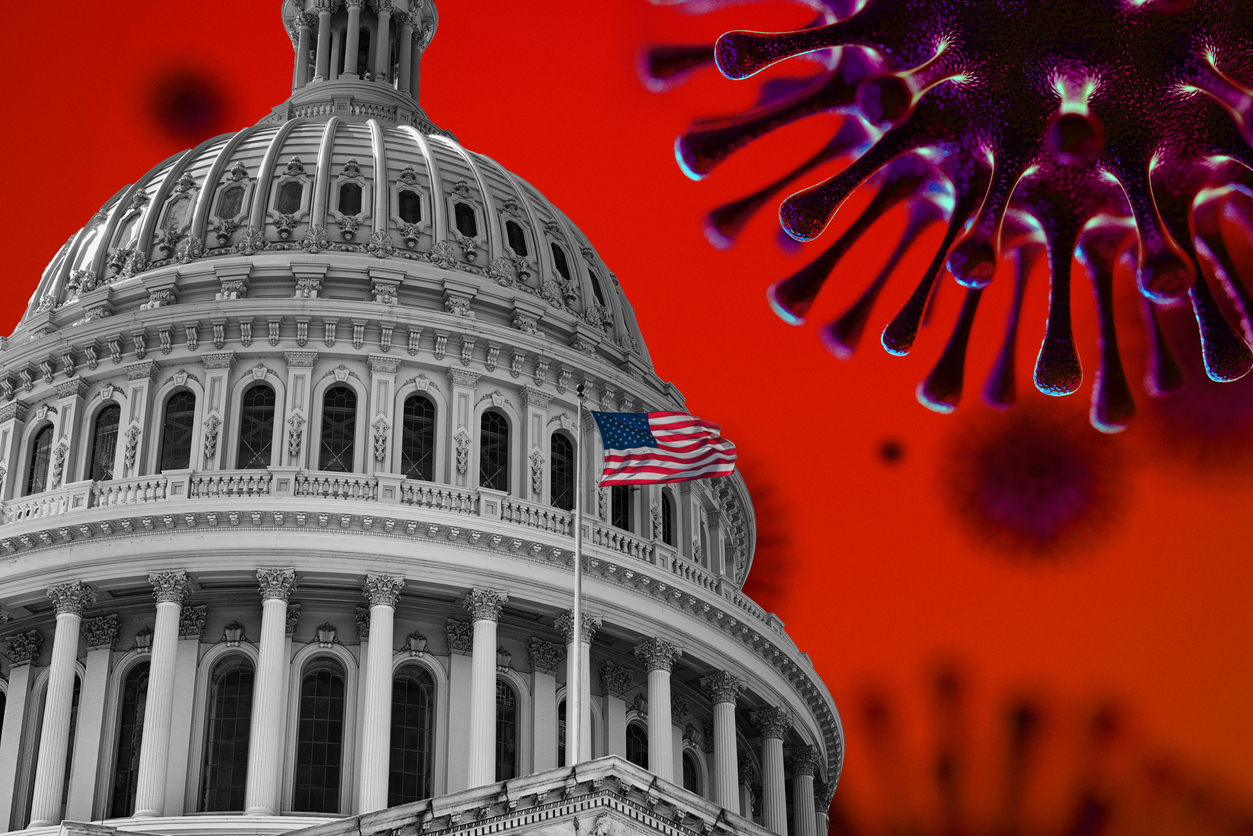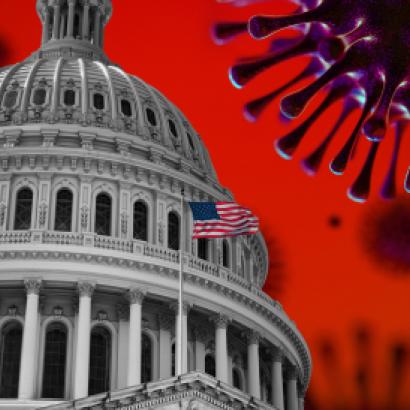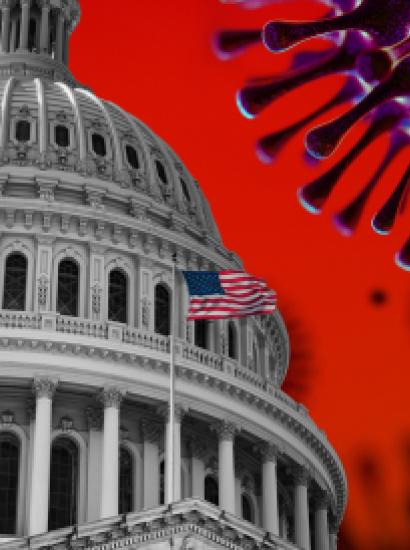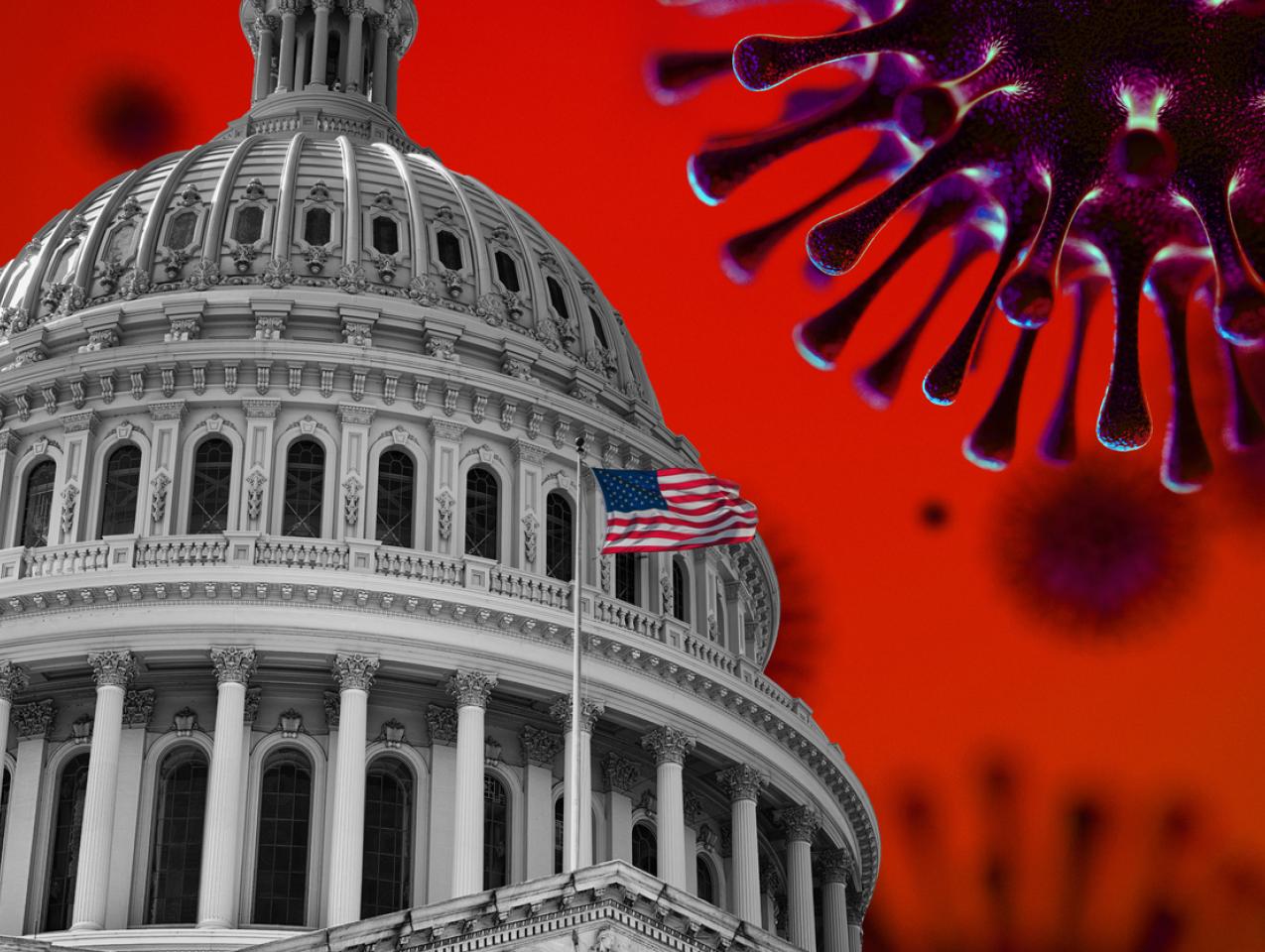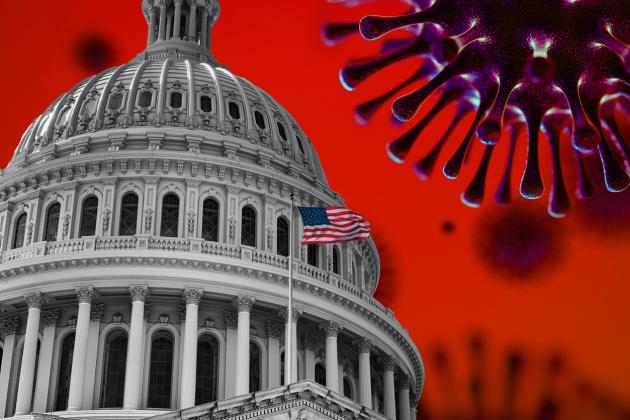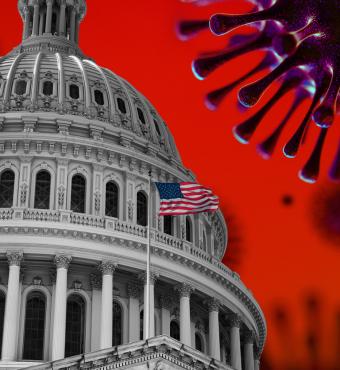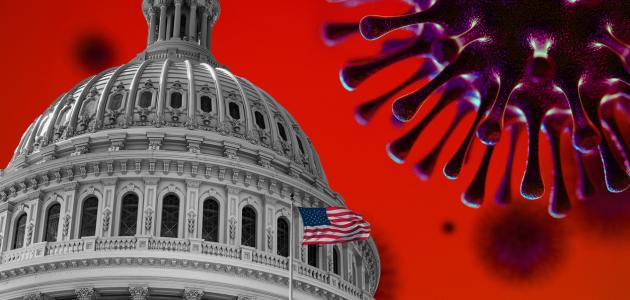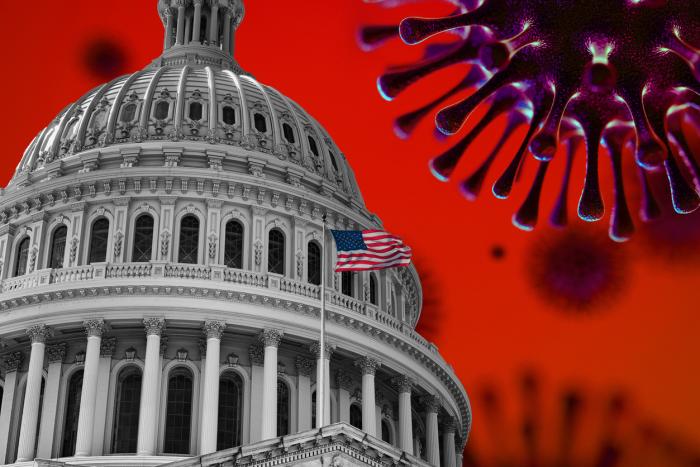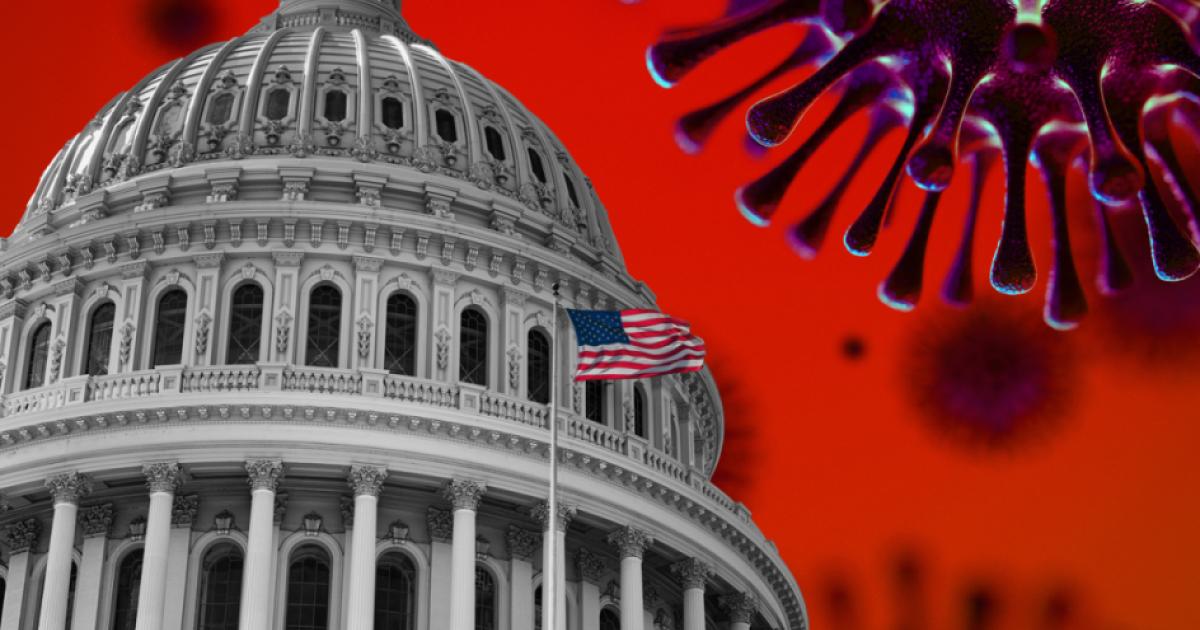- Health Care
- Law & Policy
After having moved from Canada to the United States, partly to be wealthier and partly to be freer (those two are connected, by the way), I was shocked, in March 2020, when President Trump and most US governors imposed heavy restrictions on people’s freedom. The purpose, said Trump and his COVID-19 advisers, was to “flatten the curve”: shut down people’s mobility for two weeks so that hospitals could catch up with the expected demand from COVID patients. In her book Silent Invasion, Dr. Deborah Birx, the coordinator of the White House Coronavirus Task Force, admitted that she was scrambling during those two weeks to come up with a reason to extend the lockdowns for much longer. As she put it, “I didn’t have the numbers in front of me yet to make the case for extending it longer, but I had two weeks to get them.” In short, she chose the goal and then tried to find the data to justify the goal. This, by the way, was from someone who, along with her task force colleague Dr. Anthony Fauci, kept talking about the importance of the scientific method. By the end of April 2020, the term “flatten the curve” had all but disappeared from public discussion.
Now that we are four years past that awful time, it makes sense to look back and see whether those heavy restrictions on the lives of people of all ages made sense. I’ll save you the suspense. They didn’t. The damage to the economy was huge. Remember that “the economy” is not a term used to describe a big machine; it’s a shorthand for the trillions of interactions among hundreds of millions of people. The lockdowns and the subsequent federal spending ballooned the budget deficit and consequent federal debt. The effect on children’s learning, not just in school but outside of school, was huge. These effects will be with us for a long time. It’s not as if there wasn’t another way to go. The people who came up with the idea of lockdowns did so on the basis of abstract models that had not been tested. They ignored a model of human behavior, which I’ll call Hayekian, that is tested every day.
Fear and uncertainty
Although it seems like ancient history, it’s important to remember what many of us went through in the first few months of the lockdowns. The government of Monterey County, where I live, actually beat California’s governor Gavin Newsom to the punch. It announced a lockdown a few days before Newsom did so. A day before it did so, a friend whose own business was at risk told me that the five Monterey County supervisors would impose a lockdown the next day. So I went to my landlord, whose business is in the building where I rent an office, and told him they would be closed the next day. I asked if I could keep coming since there would be no one else there and, moreover, the entrance to my office was outside and so I wouldn’t have to go into the main building. My landlord said yes.
Here was the problem. Newsom’s March 19, 2020, Executive Order N-33-20 included this statement from the state government’s Public Health Officer:
To protect public health, I as State Public Health Officer and Director
of the California Department of Public Health order all individuals living
in the State of California to stay home or at their place of residence
except as needed to maintain continuity of operations of the federal
critical infrastructure sectors.
I was, and am, in the business of writing articles and blog posts. By some unknown bureaucrat’s criteria, therefore, my business was not “essential.” So, I had reason to worry that a government official would prevent me from coming to my office. For the next few weeks, therefore, when I went in early and would normally have turned on the lights, I kept them off in case a patrolling policeman or other enforcer saw them and came to my door. Of course, that never happened, but I couldn’t have said “of course” then. Here I was in “the land of the free,” a land I had chosen because it was relatively free, worrying about whether a government official would stop me from going to an office where I worked alone.
That wasn’t the only uncertainty. My daughter Karen lived in San Francisco and made her living teaching Pilates. San Francisco mayor London Breed shut down all the gyms, and so there went my daughter’s business. (The good news was that she quickly got online and shifted many of her clients to virtual Pilates. But that’s another story.) We tried to see her every six weeks or so, whether that meant our driving up to San Fran or her driving down to Monterey. But were we allowed to drive to see her? In that first month and a half, we simply didn’t know.
One day in early May, I said to my wife that I wanted to go and see Karen. My wife said she would love to but was worried about whether a Highway Patrol officer or some other police officer would stop us. What would we say? We came up with a story: our daughter had gotten injured and we wanted to shop for her food (as if Instacart didn’t exist). Of course, no one stopped us. But we didn’t know that that would be true. We were in our late sixties at the time and so were vulnerable to COVID-19. But that meant that when we got to our daughter’s house, we didn’t hug her, went on to her patio, sat six feet from her, and ate the sandwiches that she had ordered in advance. We were perfectly capable of playing it safe—we didn’t need an ignorant government official telling us what to do.
The awful certainty
And we were the lucky ones. We had to deal with uncertainty. Many millions of workers had to deal with certainty: they were sure that state and local governments would prevent them from working. There were the obvious examples—bartenders and waiters—but also many people in retail were shut down. I never saw a clear and coherent explanation of why Walmart and Costco were allowed to remain open but many smaller retailers were not.
It’s true that the federal government had a plan for the millions of workers and hundreds of thousands of businesses that the state and local governments were shutting down: bail them out with the payroll protection plan for businesses and high unemployment benefits for workers. Senate Minority Leader Chuck Schumer accurately called the $600 per week unemployment benefit, on top of traditional state unemployment benefits, “unemployment insurance on steroids.” The bipartisan spending bill, the CARES Act, that Congress rushed through in March 2020 provided those benefits and added $2.2 trillion to the federal deficit and, therefore, to the federal debt.
Workers and businesses weren’t the only ones who faced an awful certainty. Students in most states’ government-run schools plus parents of those students also knew that for the next three months there would effectively be no school. Yes, there would be school on Zoom and related software, but talk to parents in California and you’ll learn that there wasn’t much learning going on. Moreover, in California and some other states, the shutdown of government schools lasted for an additional year.
I’ve been a strong critic of government schools. I don’t think the kids learn that much in school per se. But there were two benefits of having those schools open. First, schools were effectively babysitters, and that allowed parents to work. Second, much of the learning that happens in schools is not just on the three Rs—writing, reading, and arithmetic—plus history and science. Children also learn how to interact with other children. That was gone.
Closing the schools was so unnecessary. Here’s what I wrote in “The Abject Failure of Central Planning During Covid”:
The data from Italy showed an extreme gradient in death rates from COVID-19. A study of COVID-19 fatalities published on March 23, 2020 (Onder, Rezza, and Brusaferro, 2020), showed no fatalities for people under age 30, only 4 fatalities for people aged 30 to 39, 53 fatalities for people 40 to 59, 139 fatalities for people 60 to 69, 578 fatalities for people 70 to 79, and 850 fatalities for people aged 80 or above. That means that the median age of death from COVID-19 in Italy was above 80.
Note the date of the study quoted above: March 23, 2020. In short, the data were known right from the start.
A failure of central planning
In The Theory of Moral Sentiments, the lesser known of Adam Smith’s two great books, Smith has a telling passage about what he calls “the man of system.”
Smith writes:
The man of system, on the contrary, is apt to be very wise in his own conceit; and is often so enamoured with the supposed beauty of his own ideal plan of government, that he cannot suffer the smallest deviation from any part of it. He goes on to establish it completely and in all its parts, without any regard either to the great interests, or to the strong prejudices which may oppose it.
He seems to imagine that he can arrange the different members of a great society with as much ease as the hand arranges the different pieces upon a chess-board. He does not consider that the pieces upon the chess-board have no other principle of motion besides that which the hand impresses upon them; but that, in the great chess-board of human society, every single piece has a principle of motion of its own, altogether different from that which the legislature might chuse to impress upon it.
Donald Trump, for the first few months of the pandemic, Dr. Anthony Fauci, Dr. Deborah Birx, many other US governors and mayors, and countless other intellectuals and bureaucrats were men and women of system. They thought they had the answer to deal with a spreading disease and made no strong distinction between the low risk to young people and the much, much higher risk to the elderly.
The path not taken
Missing from the quick decisions that government officials at various levels made was the idea of tradeoffs. Yes, the disease could kill us, but did they trade off potential deaths against the huge harm that lockdowns would do to people? Interestingly, in a moment of honesty, Dr. Francis Collins, who had headed the National Institutes of Health at the time, admitted that he had made no such tradeoffs.
In a public discussion in a forum run by Braver Angels, a discussion group that tries to bridge the gap between the left and the right, Collins stated, “If you’re a public-health person and you’re trying to make a decision, you have this very narrow view of what the right decision is, and that is something that will save a life.”
He admitted that he and the other federal officials involved attached “infinite value to stopping the disease and saving a life.” He continued, “You attach a zero value to whether this actually totally disrupts people’s lives, ruins the economy, and has many kids kept out of school in a way that they never quite recovered.” That, he said, was a “public-health mindset.” To his credit, he stated that that was “another mistake we made.” The problem was that his admission, made last summer, was over three years too late. And even though he attached zero value to the disruption, he always had the power not to interfere with alternative sources of information. Instead, he sicced attack dog Anthony Fauci on the three authors of the Great Barrington Declaration.
Another path could have been taken, which was much more consistent with our traditional of freedom: get information out there and let people make their own decisions. Also, the government should not have suppressed other sources of information, as we now know government officials did when they leaned on Twitter and other social media sites.
Would keeping society open have been risky? Of course. But the risks would have been borne largely by those willing to take them. People who wanted to shut themselves off were always free to do so. Parents should have been free to keep their kids out of school if they feared for their children’s safety. It’s possible that many parents would have taken advantage of that at first but, as they saw neighborhood kids not getting badly sick, most would have relented. And for a fraction of the $2.2 billion that the feds spent to deal with COVID, the government could have paid extra to nursing home employees to stay in the homes and not circulate the disease to other nursing homes. That would have been consistent with the Great Barrington Declaration.
What was needed was a “Hayekian” approach. Friedrich Hayek was the economist who, among his other accomplishments, drove the final intellectual nail into socialism’s coffin by noting that the information central planners needed to plan an economy well was information they couldn’t have. The relevant information exists in the minds of the millions of economic actors and is often tacit.
The point is more general. Economist John Tamny, although not citing Hayek, made a Hayekian point in his book When Politicians Panicked: The New Coronavirus, Expert Opinion, and a Tragic Lapse of Reason:
What cannot be stressed enough is that if the goal is figuring out the best way to combat a virus with no known cure, those who don’t follow norms are as crucial producers of information that will enable victory as those who do. Precisely because they don’t follow the unwritten societal rules, their contracting of the virus (or not), their sickness (or not) from ignoring broad social convention, and their death rates relative to the COVID-obsessed would hopefully give those searching for solutions exponentially more to work with.
Had this Hayekian path been taken, we would be much freer, our children would be better educated, and our federal debt would be much lower.







